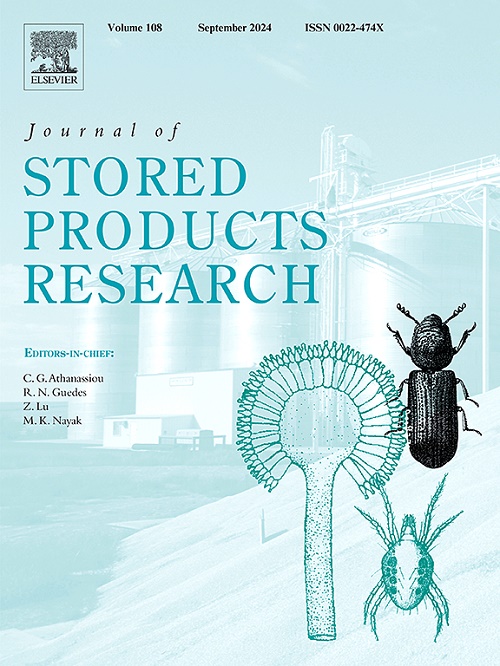A density-point network for dense tiny stored grain pest counting
IF 2.7
2区 农林科学
Q1 ENTOMOLOGY
引用次数: 0
Abstract
Monitoring stored grain pests is essential for food security and loss prevention. Traditional pest counting methods, such as bounding box-based and density map-based approaches, face challenges with tiny pests (<5 mm) and dense distributions. Overlapping annotations in bounding box methods lead to over- or under-counting, while density maps ignore isolated pests in sparse regions. Point-based methods improve on isolated pest detection but lack reliability in dense areas. To address these limitations, we propose the Density-Point Network (DP-Net), which integrates density maps and point regression for robust pest counting. DP-Net employs a backbone network to extract image features, which are processed by a Point-Regression Module for pest coordinates and a Density-Map Generating Module for pest distribution. A patch-select strategy combines these outputs to improve counting accuracy. Our experiments, conducted on a dataset of four stored grain pest species, demonstrate that DP-Net achieves an MAE (Mean Absolute Error) of 3.13 and an MSE (Mean Squared Error) of 5.63, outperforming traditional methods. These findings highlight DP-Net's effectiveness in diverse pest density scenarios, making it a promising solution for automated pest monitoring.
求助全文
约1分钟内获得全文
求助全文
来源期刊
CiteScore
5.70
自引率
18.50%
发文量
112
审稿时长
45 days
期刊介绍:
The Journal of Stored Products Research provides an international medium for the publication of both reviews and original results from laboratory and field studies on the preservation and safety of stored products, notably food stocks, covering storage-related problems from the producer through the supply chain to the consumer. Stored products are characterised by having relatively low moisture content and include raw and semi-processed foods, animal feedstuffs, and a range of other durable items, including materials such as clothing or museum artefacts.

 求助内容:
求助内容: 应助结果提醒方式:
应助结果提醒方式:


